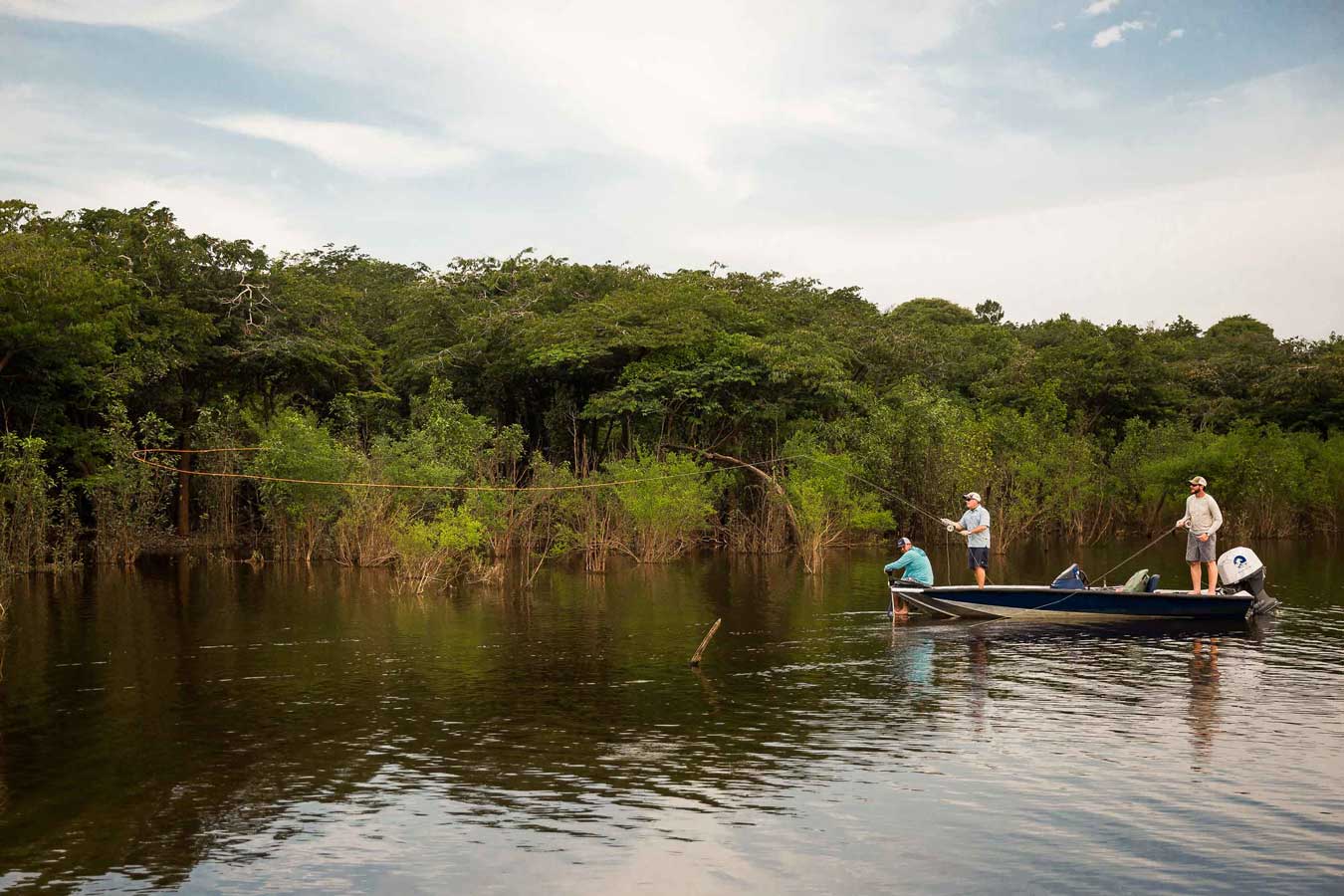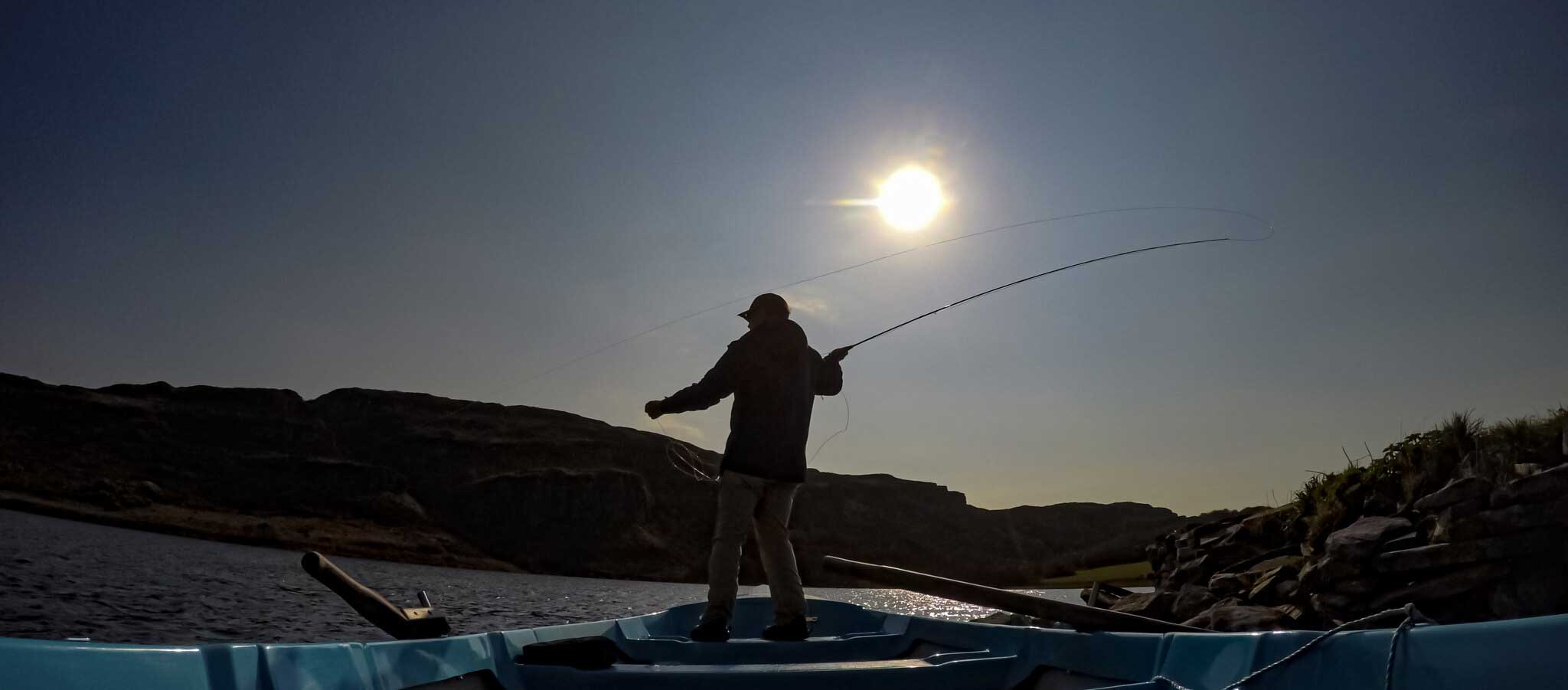Fly Casting: How to Avoid Tailing Loops

A properly formed loop is a beautiful thing | photo by David Cannon
Tailing loops are the bane of both novice and experienced casters, and they can almost all be traced to problems with the timing of the casting stroke. A tailing loop is one where the front of the fly line and the leader cross below the plane of the cast as the forward cast rolls out, often causing a tangle in the line or a wind knot in the tippet or leader.
テーリングループはフライフィッシングの初心者だけでなく熟練者にとっても厄介な問題だ。このほとんどはフライロッドを前後に振る動作のタイミングに起因する。テーリングループとは、フォワードキャストでライン先頭のループ部分がほどけて伸びていくとき、フライラインとリーダの前部がキャスト面を下へ横切るループで、ラインに「もつれ」を起こしたり、ティペットやリーダに「ウィンド・ノット」となるループのことだ。
Understanding what causes a tailing loop involves a bit of physics and a bit of psychology. Knowing both causes will improve your fly casts and your fly fishing.
テーリングループが生じる理由を理解するためには、ちょっとした物理学と心理学を必要とする。両方の原因を知れば、君のキャストと釣りは改善されるだろう。
The mechanical part can be explained by the timing of when power is applied in the casting stroke. When the rod accelerates too much at a given moment in the stroke—usually in the middle or early part—the rod flexes too much and the tip actually dips below the plane of the forward cast momentarily. Since the fly line always follows the rod tip, this causes the front of the line and leader to dip, while the rest of the fly line follows the normal plane. In real terms it’s usually a bit more complex and subtle: during the cast different portions of the line develop momentum in different planes, which means they cross and even re-cross the actual direction of the cast.
その原理はロッドを振るときのパワーを加えるタイミングで説明可能だ。ロッドを振っているときロッドを加速させ過ぎると、振りの初期または中間で、ロッドが曲がり過ぎるか、瞬間的にロッドの竿先がフォワードキャストの面よりも下がってしまう。通常、フライラインの動きはロッドの竿先に続くので、残りのフライラインがこの面にあるにも関わらず、フライラインとリーダの前部を下げてしまうことになる。実際の動作は、もっと複雑で微妙だ。キャストしたラインの様々な部分には違った方向に慣性が生じていて、これはラインの前部がキャストの現実の方向を横切ることを意味する。
Psychology is a factor because most casters apply power too early only when they are overcompensating: either trying to get a few more feet out of a cast, or getting frustrated by the wind, or simply trying to cast too much line. There isn’t a fly fisher alive who hasn’t applied power at the wrong time in their cast. Nerves, excitement, and simply not paying attention can all lead to “punching” the cast and applying too much energy at the wrong time.
キャスターの心理状態も1つの原因だ。なぜなら、もう数フィートだけキャストを伸ばそうとしたり、風でフラストレーションが溜まったり、また単に長過ぎるラインでキャストしようとするなど、ほとんどのキャスターはキャストの初期段階でキャストを調整しようとして力を入れ過ぎている。キャストのときに、誤ったタイミングで力を入れない人はいない。
An optimal casting arc has been described many times as being similar to throwing an apple from a stick: a smooth acceleration of the rod throughout the stroke, ending in a stop that releases the energy of the rod into the line (or the apple into the air). The rod tip, ideally, follows a straight line path. Too much power at the wrong time causes the rod tip to dip into a concave path.
最適なキャステイングで描くアーク(弧)は1本の棒から1個のリンゴを投げるのに似ている、とはよく言われている。つまり、ロッドをストローク中にスムーズに加速させて、ロッドのエネルギーをラインに開放し、停止させる。理想的にはロッドの竿先はラインの直線的軌道に続く。不適切なタイミングで力を入れ過ぎると、ロッドの竿先は凹んだ軌道になってしまう。

The fly line follows the path of the rod tip. If you remember one thing about how to avoid tailing loops, it is that smooth acceleration enables the cleanest loop formation | photo by Mike Edgerly
So enough of casting stroke theory. How do you fix a problem with regular tailing loops? Not even the experts have always agreed on the best remedy. (Lefty Kreh, for example, once suggested that dropping the hand during the cast would prevent tailing loops.) Most experts, though, point to smooth acceleration and correct timing of power application in the casting arc as the keys.
だから、キャスティングのストローク理論で十分だろう。君はどのようにテーリングループ問題を解決しているのか?熟練者ですらベストな修正法について意見が一致したことがない。(例えば、Lefty Krehはキャストの最中に腕を下げることでテーリングループを防げる、と示唆したことがある)しかし、ほとんどの熟練者はキャスティングの腕の振りでできるアークで、スムーズな加速と正確なタイミングを力を入れるがキーであると指摘している。
One excellent starting point for curing tailing loops is to watch your fly line and loop formation as you false cast. Turning sideways and watching the loop formation through both the forward and back casts can help. Do this enough, in your backyard or the water, and you will help build muscle memory that helps prevent abrupt changes in power.
テーリングループを治すための優れた出発点は、フォルスキャストのときフライラインとループの形をチェックすることである。フォワードキャストとバックキャストの両方の振りで、斜め横になってループの形をチェックすることが役に立つ。裏庭や川辺で、これを十分に行い、力を入れることで突然の変化が生まれることを防ぐように体に叩き込むのに有益だろう。
Another tip is to lengthen your casting stroke. Shorter casting strokes leave less room for error. By extending your arm a bit on the forward and back casting and slowing the cast a bit, you will learn the smooth timing of power application more easily.
もう1つの方法はキャストの振りを伸ばすことだ。短いストロークはエラーの余地を残してしまう。フォワードとバックキャストで少し腕を伸ばし、少しゆっくりキャストすることで、もっと簡単に力を入れるスムーズなタイミングが分かるできるでしょう。

0 件のコメント:
コメントを投稿